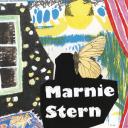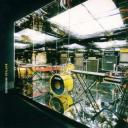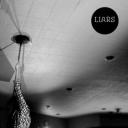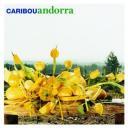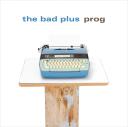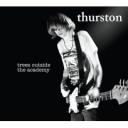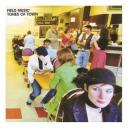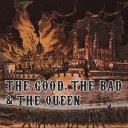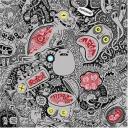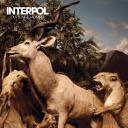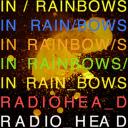I apoligize for not posting for several months. Grad school really destroyed me this past semester and I had very very little time to myself, though the thought process never stops. Be on the lookout for some more action to this site in the next few weeks, as I am between semesters.
Recently the people at DRAM were kind enough to ask me to contribute to their site once again, and I am never one to turn something like that down. I decided that my theme this time around would be a look at 20th and 21st century orchestral music. I hope that you enjoy.
—————
Music has been written for the orchestra in recent times that could rival any of the old standby “classics” of the Romantic Era, which predominate the programs of orchestras around the country. Concert bills are filled with the same canon of classical works from the 19th century and earlier. With good reason these works continue to show up in programs–they are great works of art, cultural milestones of the evolution of Western music. However, I do not believe this evolution stopped with Stravinsky’s Rite of Spring. In recent times, numerous works for orchestra have been produced that are often overlooked.
This playlist will explore a few contemporary works that, I feel, could stand up next to the canonical “classics” in a concert program. These are works that audiences may find refreshing, and could have the power to generate renewed interest in the orchestra (and “classical” music in general) as an important cultural phenomenon that has not ceased to be important and vital to our society.
There must be a general interest in keeping the orchestral repertoire alive, as these works were commissioned at some point by an interested party, and committed to a recording in order for preservation. These works do have significant cultural value, and I believe they could each find a comfortable place in the canon of orchestral music. Not only could they ensure a boost towards keeping the culture of contemporary music alive, but they could also satisfy the balance between an audience’s desires for something “familiar” (i.e. not “harsh”) and musical director’s responsibility to promote contemporary music while keeping concert halls full.
Robert Kurka – Symphony No. 2 (1949)
A mostly self-taught composer, Robert Kurka remains largely unknown. This may be due in part to his fairly short life of 37 years, though in spite of this Kurka managed to complete several chamber works, an opera that was premiered by New York City Opera and two symphonies. His Symphony No. 2 shows the composer’s boisterous rhythmic style and an exciting melodic mind.
The three movements are quite balanced in duration, adhering to the typical symphonic fast-slow-fast form. The first movement is an all out assault on the senses from beginning to end. The ensemble is whipped into frenzy at a rapid tempo that remains throughout, with the help of a rambunctious percussion section and blaring brass.
The second movement broadens the scope of the work, including lush harmonic passages that are, in their own way, equally as intense as the first movement, though ostensibly subdued. This is music of many layers, at once is brash and loud, then subtle and gently scored with bright winds accompanied by muted strings.
The conclusion of the work features a brisk melody in the strings that is given a sense of urgency by the forceful timpani. The harmonic language throughout the work is not very far removed from that of the Romantic Era, though Kurka’s shifts in dynamics and his use of angular rhythms places this piece firmly in the 20
th century. One could easily envision it as the soundtrack to a film.
In the earlier part of the 20th century, Henry Cowell was well known as a musical experimenter pushing the bounds of all aspects of music. He was at the forefront of a radical new scene that also included Carl Ruggles, Charles Ives and Edgar Varése. His influence continued past his own output, as his many students also began to make waves in the music scene.
This symphony comes from the latter part of Cowell’s compositional output, after he had married Sidney Robertson. A musicologist focused on American folk music, her influence can be heard throughout this work as fiddle tunes and simple melodies are treated as motivic generators throughout, in much the same way that Aaron Copland used them to great effect in
Appalachian Spring.
Cowell’s later works are not only influenced by folk music due to the inclusion of these simple tunes. They are also quite a bit simpler harmonically and structurally than his early experiments in rhythm and timbre because of this inclusion. The ensemble called for in Symphony No. 7 also speaks to this aspect of the music, as it is scored only for a “small orchestra” in four movements.
George Perle – Three Movements for Orchestra (1960)
This work by George Perle also sounds distinctly American, but it comes to us by way of the 2nd Viennese School. Large dense pitch collections make the orchestra sound much larger than it is. In contrast to most of the works discussed so far, Perle makes incredible use of silence to accent the more complex passages. The contrast between subtlety and extremely loud riotous passages is used to great effect.
One will notice that this work also includes the use of piano as an orchestral ensemble instrument. The piano adds a spastic element to some of the more subdued phrases, invigorating the rest of the ensemble to take intense action.
There is also an element of Alban Berg at work here, though the orchestration that Perle uses is considerably less forceful; the brass phrases that poke out repeatedly during the second movement are reminiscent of brass section passages in
Wozzeck, specifically Act I, scene
II. The third movement, much in the same character as the first and second movements, displays Perle’s compositional prowess with an ostinato around which the other instruments wrap themselves. The movement is broken up by a large silence towards the close, where a coda of sorts appears. Sustained pitches are held over a delicately descending line, whereupon the piece is brought to a close.
Leslie Bassett – Variations for Orchestra (1963)
This work holds the distinction of being awarded the 1966 Pulitzer Prize, and it is no small wonder why. This is another example of a new high point in orchestration techniques. Bassett truly gets the most out of the orchestra, treating it as though it is one congruous entity, seamlessly floating through the families of instruments to compare and contrast their timbres. The prime material seems as though it is a living thing forming before us across the entire ensemble. One can easily visualize the score in ensemble’s head as the line flows through an amalgam of registers and textures. This is a work that could easily be programmed with Ravel’s Daphnis et Chloé as they seem to share a meticulous control of orchestration.
The focus here is really motion, timbre and color concerning treatment of the line, which is never obscured throughout the work. Basset’s Echoes from an Invisible World is another fine example of the composer’s treatment of the orchestra.
John Harbison – Symphony No. 1 (1981)
Though written in 1981, well into Harbison’s career, this four-movement work is brimming over with a barely concealed excitement representing one of his earlier works for orchestra. Harbison has since written three more symphonies, many incidental and chamber works, operas, and he received a Pulitzer Prize.
The first movement, “Drammatico,” presents the listener with a sense of urgency in the ceaseless, though controlled churning of the string section. From the beginning, the dissonance of the brass is pitted against the hushed, solemn tone of the strings.Intermittent bursts from the brass occur more frequently as the first movement closes.
The following movement, “Allegro Sfumato,” finds the interruptions becoming part of one seamless fabric. Thematic material is parceled out amongst the entire orchestra. Ideas are thrown back and forth that seem at once cohesive and disruptive. This movement is short enough that it seems like a short interlude joining the first and third movements.
The apparent calm of the 3rd movement is achieved through a change in the orchestration to a more homogenous, dark color in the lower registers of the ensemble at the beginning that gives way to an eventual contrast produced by the winds and pizzicato strings. The closing fanfare is exuberant and lively, culminating with loud brass and percussion, giving way to the calm where the movement began.
Closing the work, the “Tempo giusto” movement harkens to the exciting and vivacious perpetuum mobile that opened the work. The scoring is a touch more sparse this time through and features more dialogue from the percussion section and the rest of the orchestra. The work, as a whole, has an organic unity in its design through the interplay of timbres within the ensemble. This is truly a lively work for the genre.
Karl Boelter – Dharma for Orchestra (1982)
This single movement work truly explores the concept of the orchestra as a single, unified instrument. One grand line is present throughout, traversing through the timbres of the ensemble very carefully. The work grows in increments, a movement heightened by Boelter’s painstakingly careful orchestration, which seems to join the ensemble through his perception of the similarities and differences in the character of each group of instruments, much the way one would move from one tonality to another. The climax of the piece is heralded through a growing texture of strings that resemble Janacek’s extraordinarily high, lyrical writing in his Sinfonietta. The timpani, underscoring a pointed brass line that eventually gives way to a single bell toll, to initiate the close of the piece. The strings and brass combine, unifying the orchestra from where we began. A final gesture moves from the strings through the piano in a seamless fashion, closing the circle on the unifying idea that drives the work from beginning to end.
Nicolas Roussakis – Fire and Earth and Water and Air (1983)
This work, also a single movement, brings “chaos to order” according to the composer. Aleatoric sections are interrupted by precisely notated motives that are used to describe the four elements. Each element in the piece’s title has a theme that is used first in succession and then concurrently. The composer chose to utilize the overtone series to the 22nd partial, truly showing the natural genesis of the work.
The programmatic considerations for this work were derived from Plato’s writings in “Timaeus,” which describes the creation of the world by God from the four disparate elements. These writings served the composer two-fold, not only becoming the basis of the work but also allowing Mr. Roussakis the ability to explore and express his Greek heritage. What is truly amazing about this piece is not only the clarity of the themes in describing the elements, as one can easily accept how Fire, Water, Earth and Air are represented throughout the piece, but how the aleatoric sections are able to take on a life of their own and still make perfect sense within the composition.
John Duffy – Symphony No. 1: Utah (1989)
Clarity of line and orchestration are also key aspects of this work by John Duffy. Used to a much different end than Leslie Bassett, this symphony is more comparable to the rhythmic drive and writing style of John Adams.
In the first movement, “Gods Wildness” rhythms constantly shift in the foundation of the orchestra while a whirl of woodwinds and strings reach up to the stratosphere overhead. This is contrasted with a lush chorale of brass at the close of the movement. Throughout the movement I am reminded of John Adam’s opera “Nixon in China” Act 1 Scene 2, “Founders Come First, then Profiteers.” This movement shares many similarities in character with that scene.
The slow middle movement entitled “Requiem for Glen Canyon” does not feature the same driving repetitions as the first, but instead picks up from where that movement ended, with lilting rhythms and brass featured prominently. The programmatic effect here is that the low brass and spacious voicing of chords are being used to describe the expanse of Glen Canyon. We are brought immediately to the third and final movement with echoes of Aaron Copland, through Duffy’s seeming use of folk tunes and chords with prominent open fifths in many of the harmonies. The overall effect is the appearance of a multi-movement work that takes elements from other well-known American composers to create a unified work.
Benjamin Boretz – UN for Orchestra (1999)
In Boretz’s work, we find another piece that truly explores the colors and contrasts within the orchestra. From the opening we are presented with a bright color consisting of a combination of strings, brass and percussion that will remain steady throughout the work, forming the backdrop against which the remaining members of the ensemble will continually present contrasting material.
First, the woodwinds present an ever winding, tension-filled line against the constant harmony from the opening. Each time the tension seems as though it will be resolved it only continues to meander further away, growing more dissonant, and higher in register. There is a constant expansion of ideas at work driving the piece forward. The phrases get continually longer, and the tessitura widens continuously. Eventually the woodwinds seem to succumb to the strings and sink into the ensemble, becoming part of their harmonic backdrop, only to be completely exposed at the end.
Aaron Jay Kernis – Sarabanda in Memoriam (2004)
Any piece for string orchestra written after Barber’s Adagio stands the chance of being overshadowed by its famous predecessor. Kernis’ Sarabanda might begin in that shadow, but it emerges to display an original assortment of textural explorations and rhythmic vitality that truly tests all the possibilities of the ensemble.
The harmonic richness of the work pays homage to the post-romantic American school of writing from the mid part of the 19th Century. This is not to say that the piece seems dated, on the contrary, the composer breathes new life into the string section. Creative use of form and string techniques help propel the piece perpetually forward. Extended solo sections are underpinned by low, open string pedal tones. Other sections feature duets with a seemingly muted ensemble, placing an aural distance between melody and harmony as if the entire string orchestra has been relocated temporarily offstage.
I feel that this playlist presents a good sampling of American orchestral works from the past 60 years. Each work brings something different to the ensemble, some traditions adhered to, others disregarded in favor of something new. My ultimate hope is that these works, or others like them, would eventually find their way into the concert hall with more frequency. The art of our culture should be represented more, which will show American composers to be well influenced by other musical traditions, but always with their own unique spin. Concert music is a vital part of our society and only through exposure and encouragement will great works, such as these, continue to be produced.
(original article can be found here)
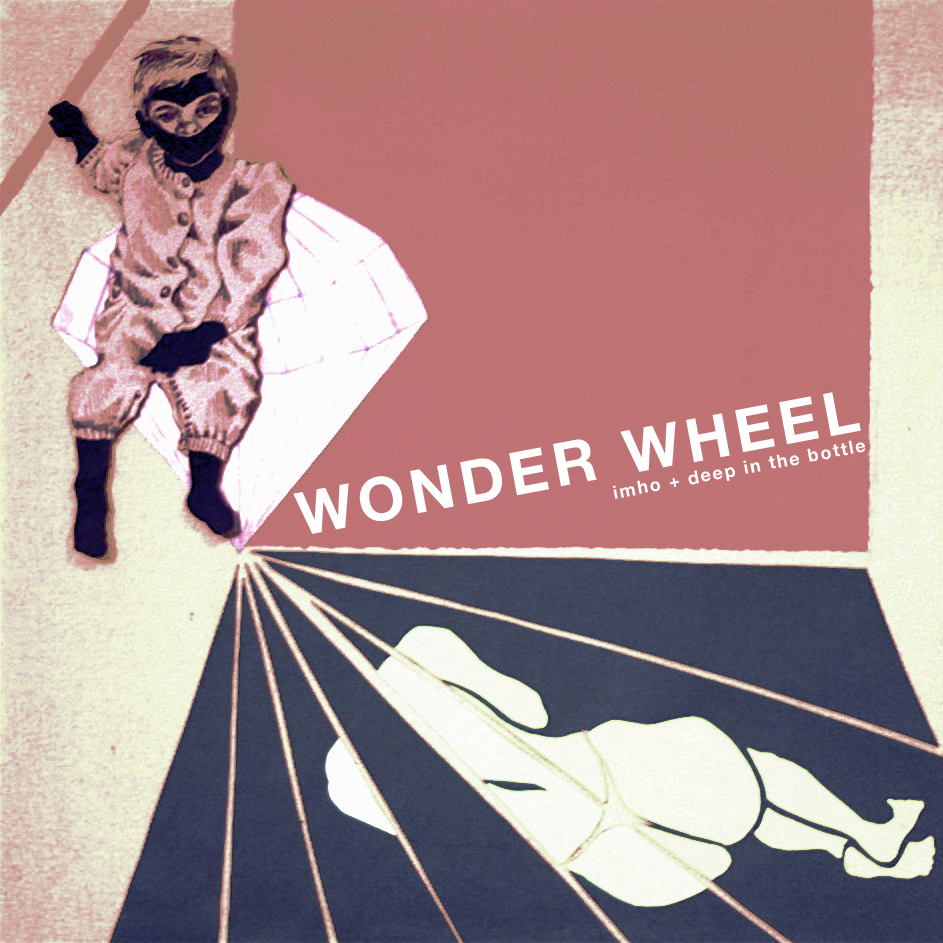


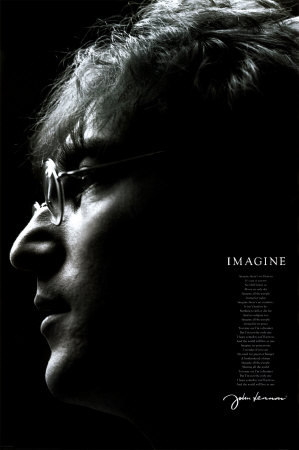


 15.) Animal Collective -“Strawberry Jam”
15.) Animal Collective -“Strawberry Jam”